Of all metals, copper has been used to fabricate tools and weapons since about 3500 BC. Today, copper and copper alloys are chosen due to corrosion resistance and electrical and thermal conductivity properties.
Unique characteristics such as high thermal conductivity and high thermal expansion make copper welding somewhat challenging.
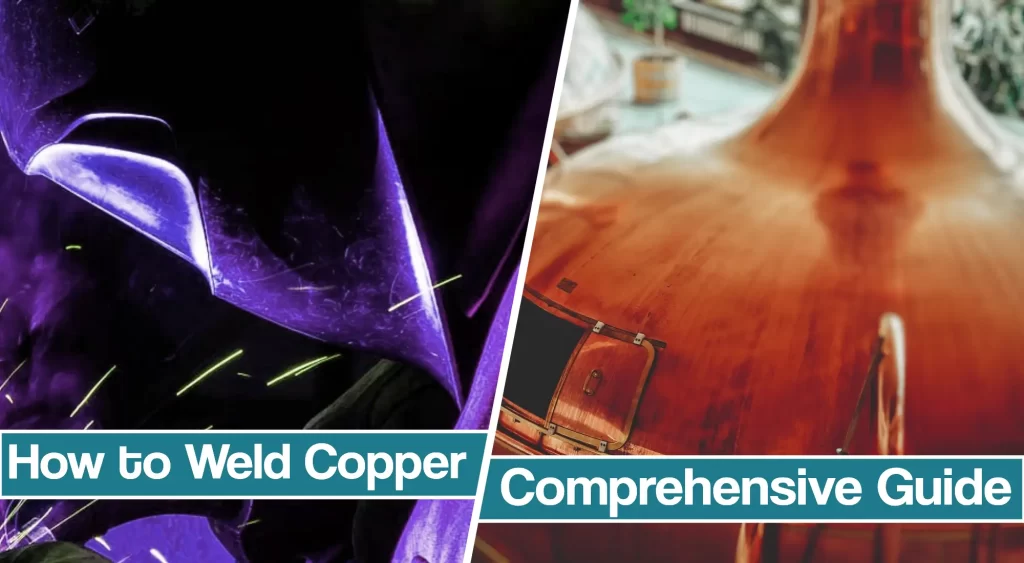
However, once you understand how these affect weld quality, you will be ready to weld copper easily.
Therefore, this detailed article on copper welding will cover copper’s key aspects and properties and the most common welding methods.
Copper Properties and Weldability
Copper is a soft, non-ferrous metal that can be easily bent, cut, shaped, and joined using several welding processes. However, pure copper can be strengthened only by cold working as it does not undergo phase changes.
Therefore, copper cannot be hardened by heat treatment compared to steel. Besides pure copper, many copper alloys will soften, resulting in a significant loss of strength in heat-affected zones when heated.
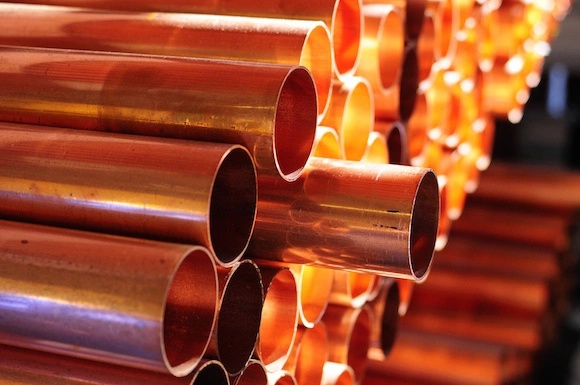
Before discussing copper welding, you should be aware of two essential properties:
- High thermal conductivity: indicates preheat is required for many joints, even at relatively modest thicknesses,
- A high thermal expansion coefficient is about 50 percent higher than carbon steel, and it indicates distortion can occur rapidly with root gaps closing during welding.
Copper is normally supplied in one of three forms:
- Oxygen-free copper
- Oxygen-bearing copper
- Phosphorous deoxidized copper
Since pure copper is too malleable to be successfully machined, small quantities of other elements are added to improve ductility and machinability. Alloying elements such as aluminum, nickel, zinc, tin, and silicon make copper more resistant to corrosion, improve its mechanical properties, and improve its weldability.
Copper Alloys
As a result of trying to increase the properties of pure copper, there are more than 300 copper alloys available commercially. Since the list is too long to describe individually, these alloys can be conveniently placed into nine separate groups:
- Pure copper with less than 0.7% residual elements
- High copper alloys with less than 5% alloying elements
- Copper alloys with up to 40% zinc (brasses)
- Alloys with less than 10% tin (bronzes)
- Alloys with less than 10% aluminum (aluminum bronzes)
- Alloys with less than 3% silicon (silicon bronze)
- Alloys with less than 30% nickel (cupro-nickel alloys)
- Alloys with less than 40% Zn and less than 18% Ni (nickel silvers)
- Alloys with less than 10%Sn and less than 4%Zn (red brass or gunmetal)
- Special alloys, including other elements.
Welding Copper & Copper Alloys
Copper and most copper alloys can be successfully joined using welding, brazing, or soldering techniques. Gas Tungsten Arc Welding and Gas Metal Arc Welding are the preferred welding processes, but oxyacetylene and Manual Metal Arc welding can also be used in specific applications.
Choosing the proper welding process depends on the type of copper alloy. The different welding and related processes require various tools and techniques, but several things including weld preparation, are similar to carbon steels.
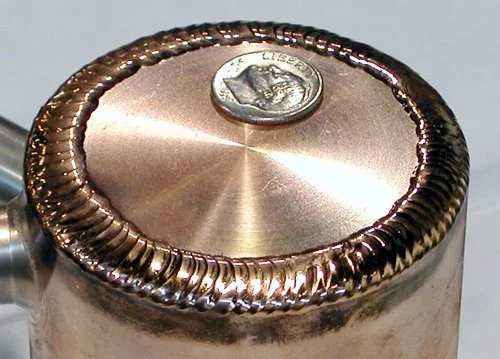
Welding Joint Design
Due to the high thermal conductivity of copper, the joint designs are broader than those used for steel. This approach allows good fusion and penetration. Ideally, you should control this distance within specific tolerances, but the optimum gap for joints is between 0.04 and 0.20 mm.
Joint designs for GTAW and SMAW can be edge flange, square groove, single V groove, double V groove, single U, and double U groove. When dealing with gas metal arc welding processes, good designs are square groove, single V groove, double V groove, and double U groove.
Surface Cleaning And Preparation
The weld area should be clean and free of oil, grease, dirt, paint, and oxides before welding. You can use a bronze wire brush followed by degreasing with a suitable cleaning agent to clean the surface.
After each weld run is deposited, the oxide film formed during welding should also be removed with a wire brush. Trapped oxide films can cause weld defects and porosity if left uncleaned. In addition, each impurity can cause weld cracks and other defects.
How to Preheat Copper
Since copper is an excellent conductor of heat, welding thick copper will require a pre heat. However, keep in mind that most copper alloys do not need pre-heating since alloying elements reduce the conductivity and lower the thermal diffusivity.
Therefore, aluminum bronze and copper-nickel alloys should not be preheated.
Overall, the preheat temperature can vary due to the selected welding process, welded alloys, base metal thickness, and extent of the mass of the weldment.
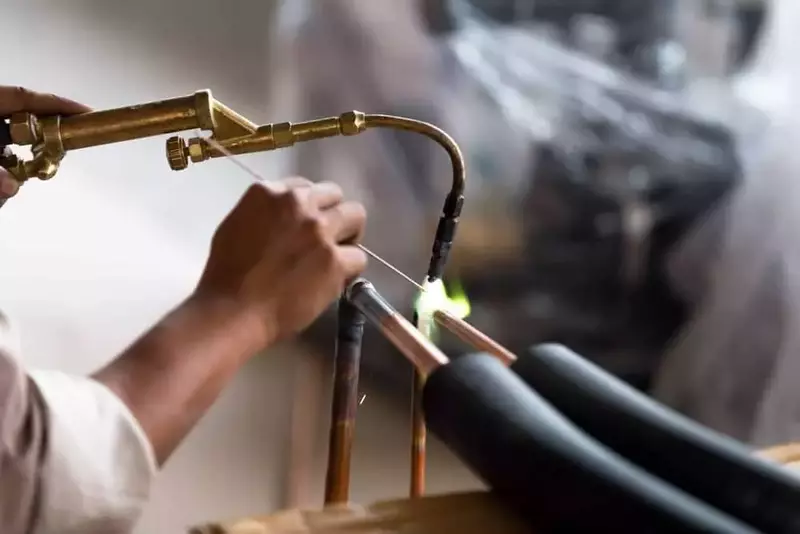
You should make sure heat-affected zones are localized, as spread heat can cause a loss in elasticity. In addition, preheat temperature should be maintained until the joining copper is complete.
Gas metal arc welding copper
MIG or GMAW welding is one of the most straightforward welding processes to master, and when following the tips, you can use it successfully to join copper and copper alloys. However, you should first match filler material, which is ERCu electrodes.
Keep in mind that the shielding gas mixture depends on the thickness of the copper. Welding thin sheets of copper would require argon gas, while a helium-argon mixture is used for thicker sections.
However, the most common choices are:
- Welding Grade Argon
- Ar + >0-3% O2 or equivalent shielding gases
- Ar + 25% He or equivalent shielding gases
- He + 25% Ar or equivalent shielding gases
The best practice is a spray transfer of the filler metal in the narrow weave beads.
MIG Welding Copper Silicon Bronze
When dealing with copper silicon alloys, often referred to as copper silicon bronze, you should use ERCuSi-A type welding electrodes. The rule of thumb is argon shielding gas with relatively high travel speeds.
As we mentioned, preheating is not necessary, but you will have to remove the oxide layer between each pass. In addition, interpass temperature should not exceed 212 F.
MIG Welding Copper Tin Alloys
Copper-tin alloys are often called phosphor bronze, and they have a wide solidification range. However, to avoid weld metal porosity and cracking, you should be extra careful.
As a piece of advice, hot peening will reduce the stresses developed during welding, reducing the likelihood of cracking. Also, you should keep the weld pool small using stringer beads at high travel speed.
MIG welding with copper-plated 1020
Once you decide to MIG welding 1020 steel to 8620 bushing that was carburized, you might run into some issues. The bushing can be coated by a layer of copper, which prevents carburization in the area of the MIG weld. If the copper is not removed prior to MIG welding is there a potential for hot shortness in the weld and other defects.
Copper cracking is a very real concern and will depend on the amount of copper in the resulting weld deposit. Yet, the deposit depends on the melted items, such as wire and base material (both sides, and with the coating). Another concern can be the thickness of the coating.
Therefore, removing a copper layer in MIG welding copper-plated 1020 will depend on the thickness of the coating and the amount of copper in the deposit.
[TIG] Gas tungsten Arc Welding Copper
TIG welding copper is often used when joining copper up to 5/8 of an inch. When welding copper-nickel alloy, you should match the composition of the filler metal to the alloy.
Argon shielding is preferred for copper and copper alloys up to 1/16 inch, while thicker metal will require helium mixes. For example, argon/helium mixes (75% He/25% Ar) offer higher penetration and higher welding speed at the same welding current.
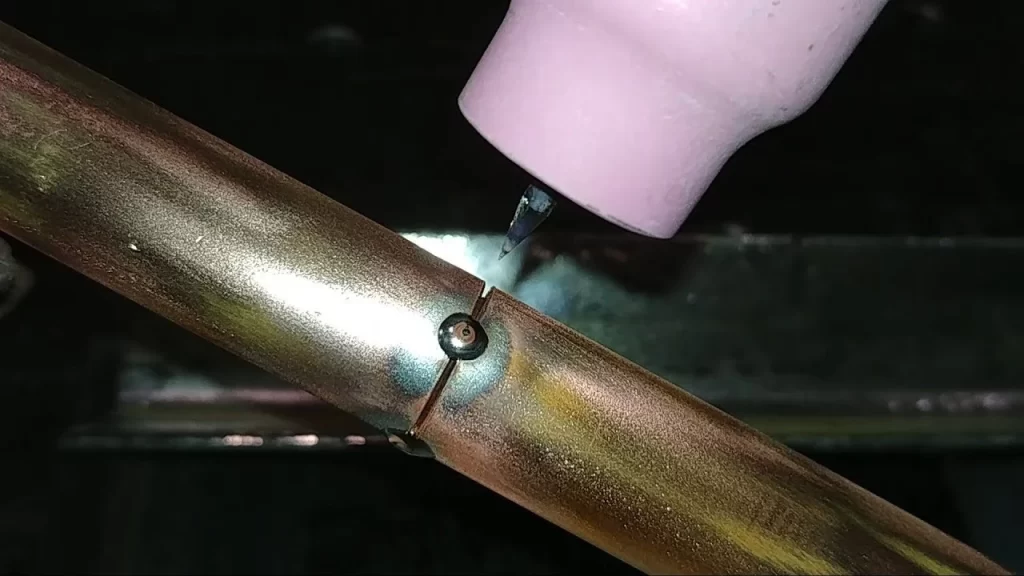
As a result, this mix combines penetration characteristics of helium with easy arc starting and improved arc stability properties of argon.
TIG Welding Copper-Aluminum Alloys
You can TIG weld copper-aluminum alloys using an ERCuAl-A2 filler rod. To remove oxide films during welding, you can use alternating current (AC) and pure argon shielding gas.
However, if you are looking for deeper penetration and higher travel speed, you can opt for a direct current electrode negative (DCEN) with welding grade argon or argon/helium mix. Preheat is only required on thicker sections
TIG Welding Silicon Bronze
Alloys with less than 3% silicon, also referred to as silicon bronze, can be welded using ERCuSi-A or ERCuAl-A2 welding rods. Like copper-aluminum alloys, silicon bronze can be welded using AC current with argon shielding gas or DC negative current with helium/argon mix.
Shielded metal arc welding copper
Stick welding is usually used for the maintenance and repair welding of copper, copper alloys, and bronzes. Besides repairs, typical applications are fillet welded joints with limited access and welding copper to other metals.
Groove joint design is most commonly used, either U or V square, single or double. Direct Current electrode positive (DC+) with a stringer bead technique should be used. Sections thicker than 1/16 inch require a preheat of 480 °F or greater.
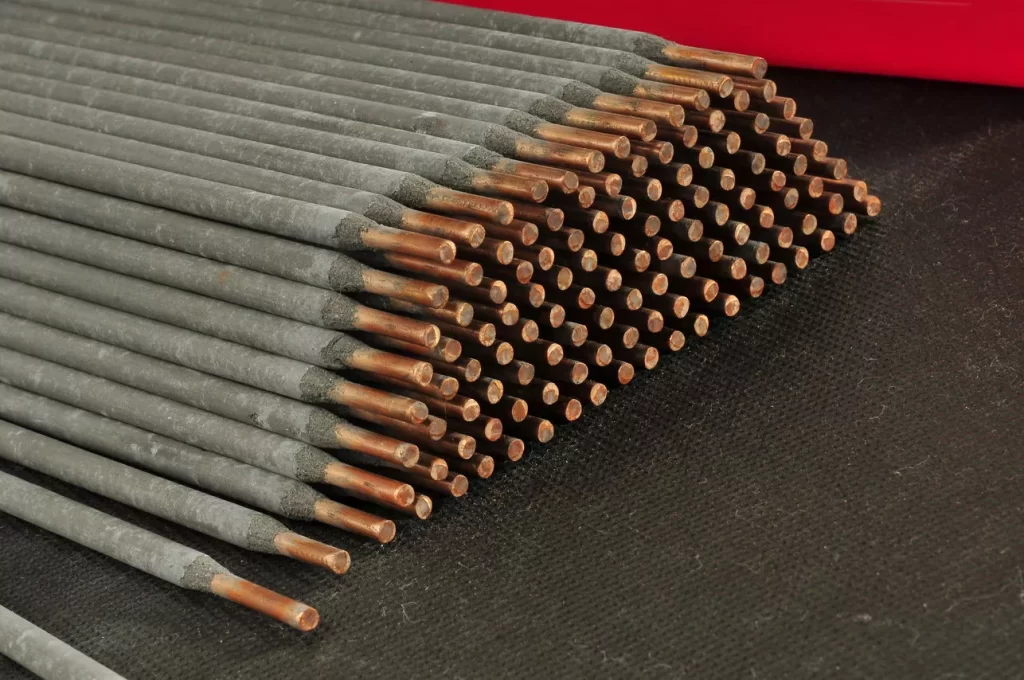
ECuSn-C electrodes can be used to weld copper-tin and copper-zinc alloys. However, large butt angles are required, and the weld metal should be deposited using the stringer bead.
Oxyfuel Copper Welding
Fusion welding of copper with the oxy-acetylene torch is made difficult by two properties of copper: its exceptionally high heat conductivity and its high coefficient of expansion. Cold, copper is very ductile and brittle so it is very likely to fracture, either at the weld or some distance away.
A special welding rod is necessary to contain an element opposing the action of oxygen on the copper and flux for the same purpose as well. The cone should not come in direct contact with the metal at any time.
For repair purposes, it is sometimes not practical to weld the break, and we then braze it, either with brass or bronze, using the brass flux for this purpose and following the same general directions as for brazing malleable iron.
Brazing and Soldering Copper and Copper alloys
Soldering is one of the earliest methods used to join metal and involves heating filler metal until it melts so that it can fill joints.
Soft soldering is the most straightforward process, and people commonly use it around the home to repair small metal items.
It is also the method plumbers use to join and repair the copper pipes and copper fittings.
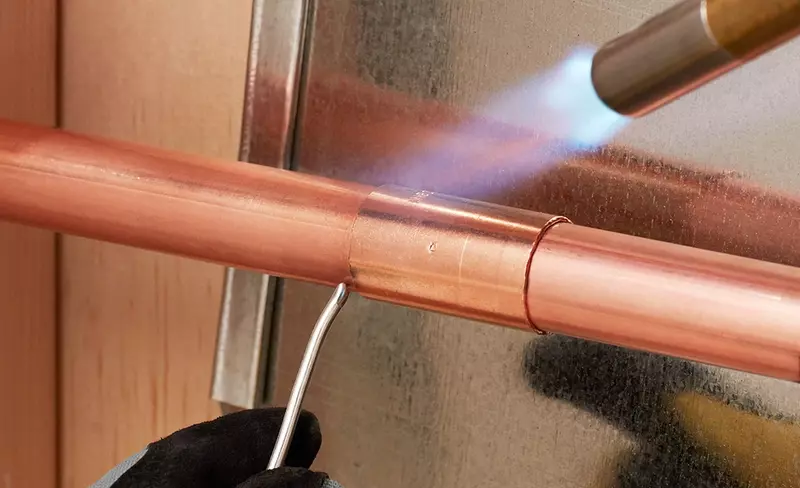
Brazing is similar to soldering, as it utilizes the same sort of filler materials (wire or a brazing rod) used for soldering. However, even though brazing temperatures are considerably higher compared to soldering, the base metal mustn’t be heated to the melting point.
Frequently Asked Questions
How to Join a Piece Of Copper To Thick Steel Using GMAW?
The best filler material would be aluminum bronze, ECuAl-A2. This alloy is typically available in 0.045 in. and 0.0625-in. diameters. The shielding gas choice is either a 100% CO2 or a standard 75/25 Ar/He mixture. Higher helium content in the mixture, or a pure helium shielding gas can be used but this costs more. Also, don’t forget to preheat the to a minimum temperature of 1,000 degree F.
Resources
- https://www.forsteramerica.com/tips-welding-copper/
- https://www.copper.org/applications/marine/cuni/fabrication/welding_and_fabrication.html
- https://www.twi-global.com/technical-knowledge/job-knowledge/welding-of-copper-and-its-alloys-part-1-111
- https://www.industrialmetalsupply.com/blog/welding-copper-and-copper-alloys
- https://www.brazing.com/Support/Procedures_and_techniques/CopperWeldingProcedures.aspx#Fig1





